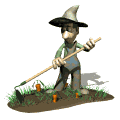INTRODUCTION TO PROVERBS
QUESTIONS FOR STUDY ONE
OUTLINE
Before analyzing the test of any book of the Bible, it is well to learn the historical background.
Also, it is best to make a "skyscraper" view of its general contents. Accordingly, this introduction is divided into two parts: background and survey.

The image titled "King Solomon Dictates his Proverbs" depicts scribes recording King Solomon speaking proverbs. Engraving by Martin Bernigeroth (1670-1733) after the design of Samuel Bottschild (1641-1707).
The image was in a book by Martin Luther (1483-1546) titled, "Biblia : Das ist die gantze Heilige Schrifft, Alten und Neuen Testaments / teutsch übersetzet von D. Martin Luther, mit dem Anhang des dritten und vierdten Buchs Esrä, und dritten Maccabäer ; nebst vierhundert eingedruckten Kupffern, von einem guten Künstler verfertiget, in welchen eine iede Historia auffs genaueste exprimiret und die Architectur wohl observiret ist, dass sie auch unterschiedliche Künstler und Handwerkercker zu ihrem grossen Nutzen brauchen können, und wird iedes Kupffer bey denen Worten, worvon es handelt, gleich eingedruckt gefunden, damit der Leser die Worte und Figur beysammen haben kann ; so ist auch diese Edition mit nöthigen Summarien und nützlicher Erklärung iedes Capitels, ordentlicher Anweisung zu Sonn-und Fest-tägigem Gebrauch, auch durchgehends mit sehr vielen Marginal-Concordantien mermehret ; mit Approbation der hochlöbl. theologischen Facultät zu Leipzig und einer Vorrede Herrn D. Thomä Ittigs, Theol. P. P. und Superintend.
The online edition of this work in the public domain, i.e., not protected by copyright, has been produced by Pitts Theology Library, Emory University.
- BACKGROUND
- Author.
- Mostly Solomon King of United Israel.
- Others include
- What was common wise sayings (22:17-24:34)
- Agur son of Jaken (chapter 30)
- King Lemuel (chapter 31)
- Date and Place of Writing
Solomon, the third king of united Israel either said or wrote most of the book of Proverbs. He reigned from 970 to 930 B.C. His father was King David. His mother was Bathsheba. 1 Kings 1:1-10:43 and 2 Chronicles 1:1-9:31 record his rule.
The Proverbs of Solomon were brought together sometime before the reign of Hezekiah, king of Israel. Chapters 25 through 29 added by either King Hezekiah, by order of Hezekiah, or shortly after he died.
- The role of Hezekiah's men (25:1) indicates that important sections of Proverbs were compiled and edited from 715 to 686 B.C. This was a time of spiritual renewal led by the king, who also showed great interest in the writings of David and Asaph (2 Chronicles 29:30). (NIV Study Bible)
- Perhaps it was also at this time that the sayings of Agur (30) and Lemuel (31:1-9) and the other "sayings of the wise" were added to the Solomonic collections, though it is possible that the task of compilation was not completed until after the reign of Hezekiah. (NIV Study Bible)
- Addressee
The beginning chapters of Proverbs are addressed to Solomon's children. The remainder are addressed to everyone. Whoever reads Proverbs are meant to be the recipient.
- Occasion and Purpose
Proverbs are directed to help a person grow from being simple minded to wise.
- Form and Style
- FORM.
Most of the Ancient Near Eastern wisdom material has been found in some type of poetic structure. Until recent years these structures have been a mystery because they did not seem to rhyme either in meter or sound as modern languages do. However, in A.D. 1753 Bishop Robert Lowth unlocked the key to such poetic writing when he discovered that Hebrew poetry rhymed in thought. Moreover, he surmised that such thoughts were most commonly expressed in parallel patterns. Some of these patterns expressed the same thoughts (Prov. 20:1), while others expressed opposing thoughts (Prov. 10:1), or developed a given thought (Prov. 31:10-31). In time, these parallel patterns were structured into specific forms such as the proverb, riddle, allegory, hymn, disputation, autobiographical narrative, didactic narrative, and lists. No doubt, such beautiful and intricate poetic structure was clearly a mark of the sage and the wisdom schools of his day and age. (Holman Bible Dictionary)
- STYLE.
Most are one or two line proverbs. They do not rhyme nor have a cadence.
- Place Among the Old Testament Books
Proverbs is located among the poetic books. It is the first of the books accredited to Solomon.
- SURVEY
A common form in wisdom literature where a short, memorable statement is used to give wise advice or counsel. Sometimes designed to provoke a conclusion about the natural world based on experience or observation. Characterized by metaphor, terseness, ease of memorization, and applicability outside its original context. (The Lexham Bible Dictionary and just about every other Bible dictionary)
STUDY 1 QUESTIONS
STUDY 1 COMMENTS
|
























